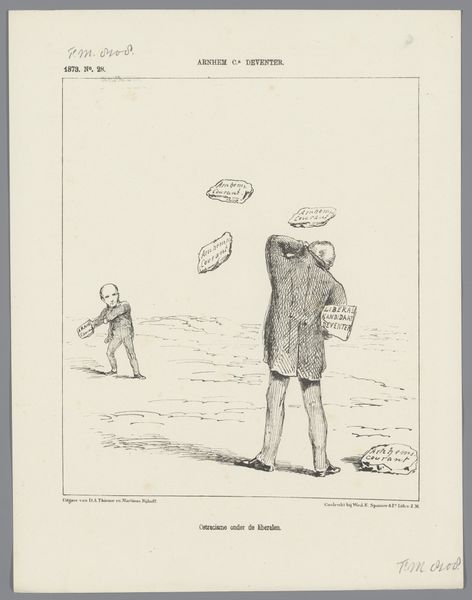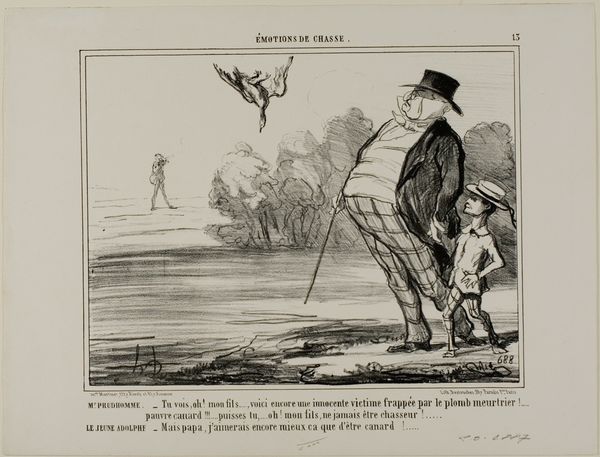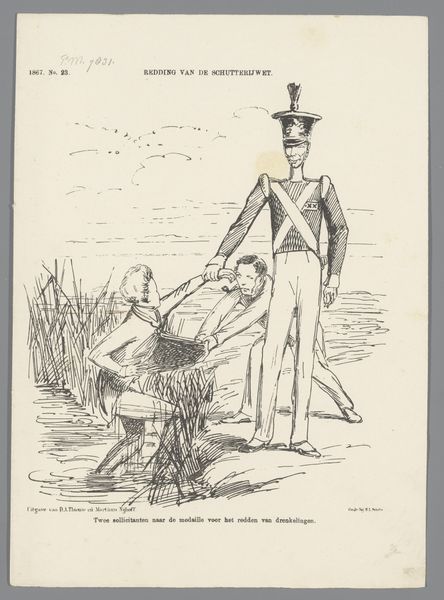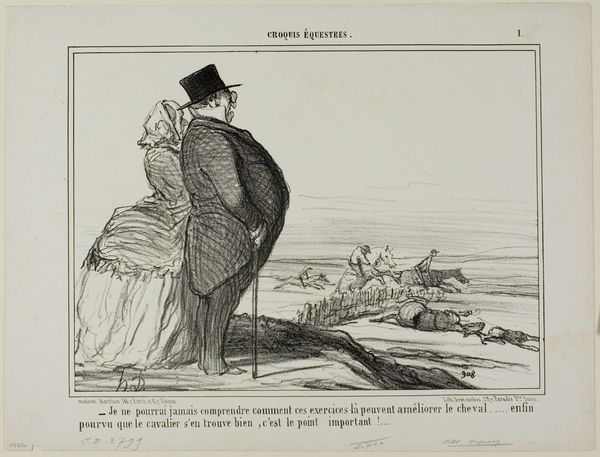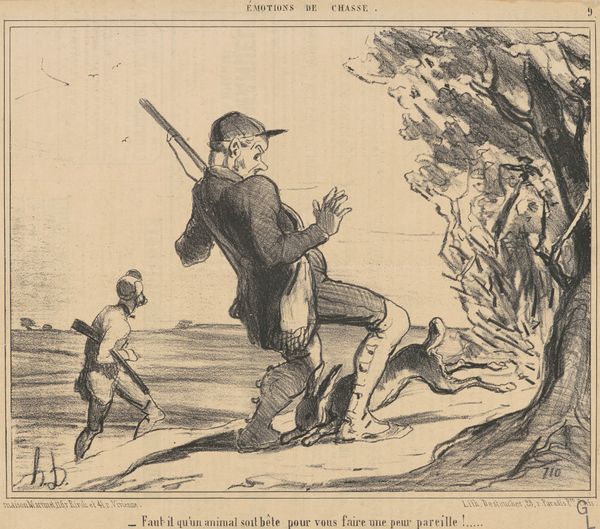
“- Madame Prudhomme, let's not hurry, let's recall that dignity should preside over all acts of life... dignity alone distinguishes man from the rest of the animals,” plate 2 from Croquis Aquatiques 1854
drawing, lithograph, print, paper
drawing
quirky sketch
lithograph
pencil sketch
paper
personal sketchbook
idea generation sketch
sketchwork
ink drawing experimentation
pen-ink sketch
france
sketchbook drawing
pencil work
sketchbook art
Dimensions: 213 × 263 mm (image); 281 × 362 mm (sheet)
Copyright: Public Domain
Editor: This is plate 2 from "Croquis Aquatiques" by Honoré Daumier, made in 1854. It’s a lithograph on paper, and it immediately strikes me as satirical. The figures are drawn with such exaggeration. What do you make of it? Curator: Daumier truly understood how to use visual cues to communicate complex ideas about human nature. Here, the text underscores the image: "dignity alone distinguishes man from the rest of the animals.” This idea of 'dignity' as performative and perhaps even absurd is highlighted by the visual language – the characters are at the beach, likely a new leisure activity for the rising middle class. What do their clothes signify to you? Editor: Well, their swimwear seems rather formal, almost like they’re trying to maintain appearances even in a casual setting. It makes them seem even more ridiculous, really. Curator: Precisely! And this tension is central to Daumier’s commentary. Notice how he uses line and form. Exaggerated features, like Madame Prudhomme's bulging physique and Monsieur Prudhomme's stance, reveal anxieties surrounding social status. It’s as if Daumier is asking: How do we cling to our self-image of dignity even when indulging in leisure? Does that dignity appear naturally, or does it turn into a funny masquerade? Editor: That’s a great point. I didn't really consider the context of the rising middle class and anxieties around maintaining appearances. Curator: And think about where this was published - likely a widely-circulated journal. Daumier was engaging in a conversation with the public about these evolving social dynamics, inviting viewers to reflect on their own behaviors and perceptions of 'dignity.' He saw through the masks. Editor: This has definitely changed how I see Daumier's work. It’s not just caricature; it’s a form of social commentary. Curator: Indeed. The power of the image lies in its ability to encapsulate and critique entire cultural landscapes, and Daumier was a master of that art.
Comments
No comments
Be the first to comment and join the conversation on the ultimate creative platform.

